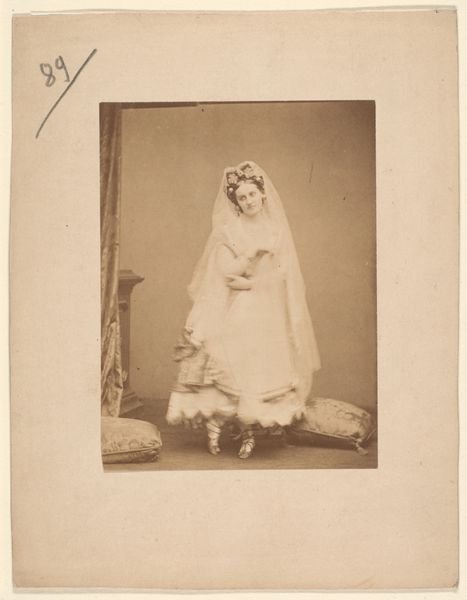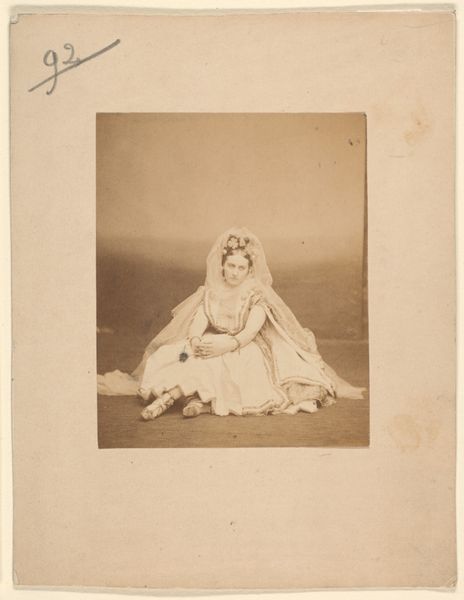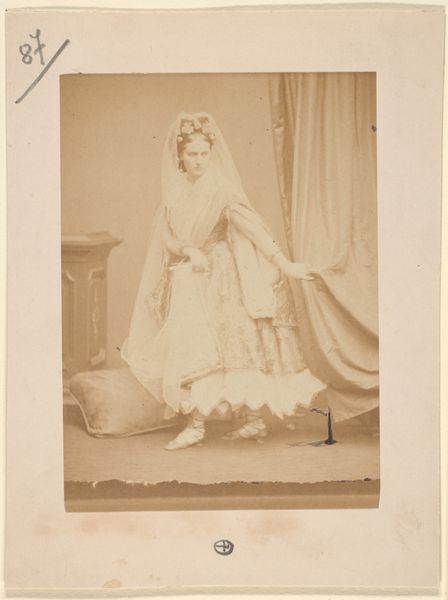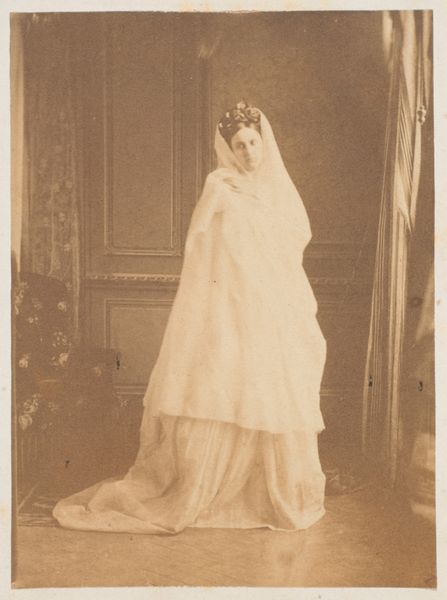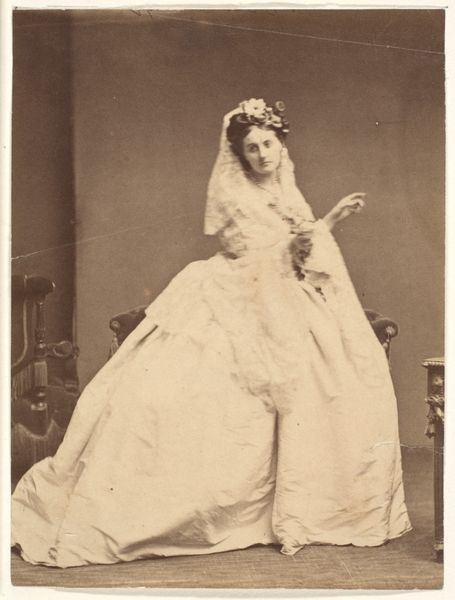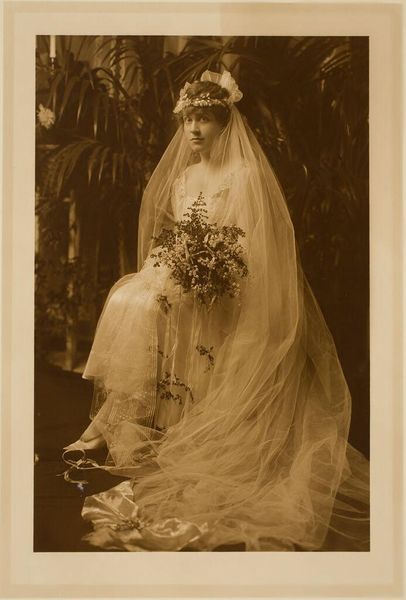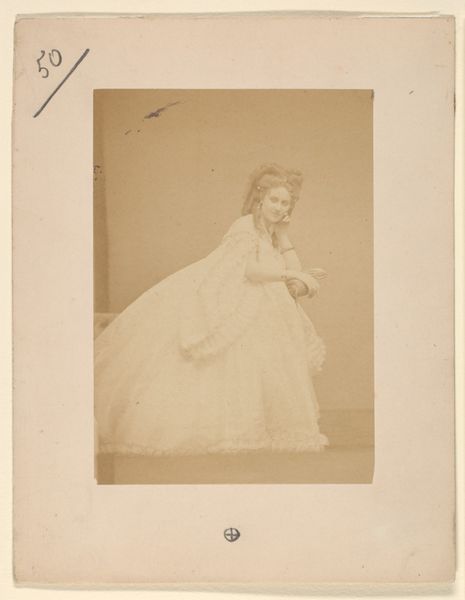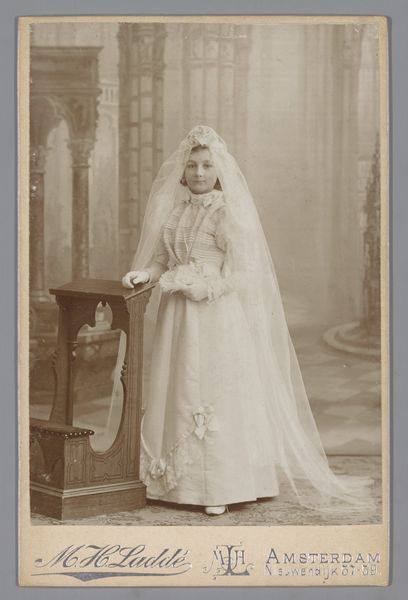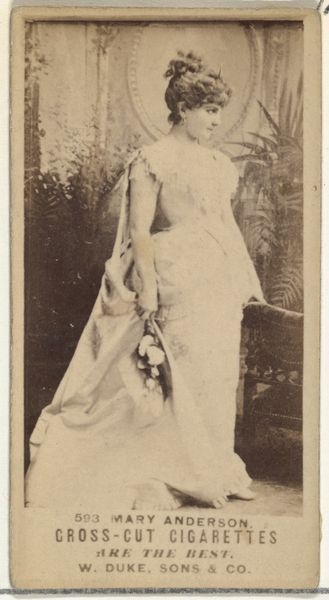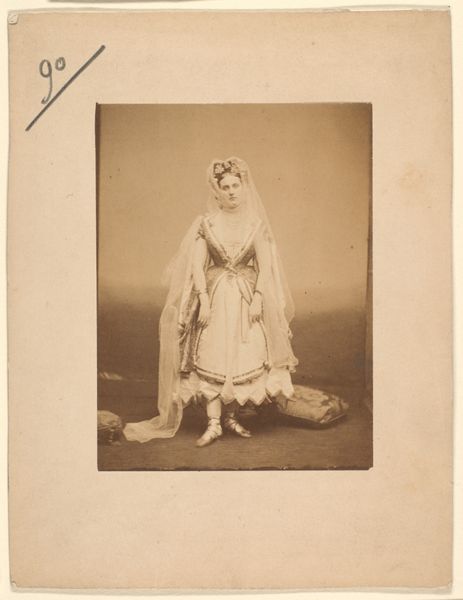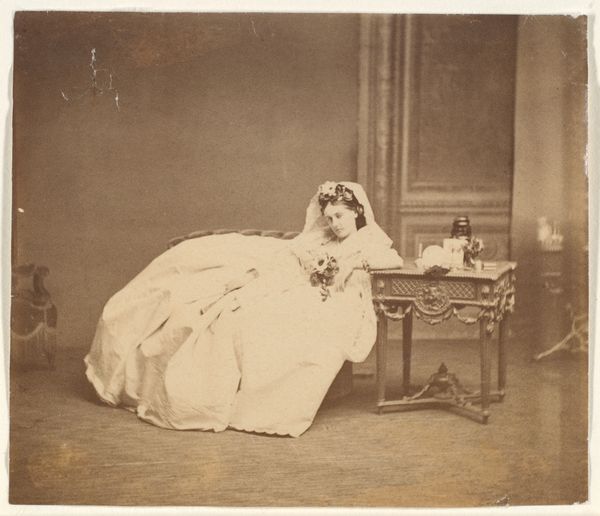
Copyright: Public Domain
Curator: Here we have Pierre-Louis Pierson’s “Judith,” an albumen print dating back to the 1860s and currently held at the Metropolitan Museum of Art. It presents a seated woman draped in what appears to be ornate drapery. What are your initial thoughts? Editor: Immediately, the texture strikes me. The photographic process is rendered in shades of sepia, almost giving it the feeling of an old master drawing. But the subject's direct gaze, framed by delicate fabrics, hints at more than just surface aesthetics. Curator: Pierson was a favorite of the Countess de Castiglione. This albumen print showcases the subject, the Countess herself, posed as the biblical figure Judith. Thinking about photographic production, how do we interpret such elaborate costuming? This goes way beyond a simple portrait session, doesn’t it? Editor: Absolutely, let’s look closer at that 'Judith' persona. What does it mean for a woman of immense privilege and recognized beauty to align herself with such a figure? We are clearly intended to ponder about issues of female strength and agency. Here we find her playing with very complicated socio-political concepts that, to our contemporary view, seem completely at odds. Curator: The albumen print itself becomes part of this performative social project, doesn’t it? We need to consider that albumen came from eggs, requiring a degree of material organization and domestic labor that we often overlook. Editor: It’s fascinating to think about that labour process informing Pierson's portraits and transforming them into such layered commentaries on femininity and its representation. Beyond the artist’s hand, how much labor of mostly underpaid or uncredited seamstresses went into those clothes? What stories are imprinted there? Curator: By bringing together labor and the elite presentation of self through photography, Pierson's work helps us see these constructed images of privilege. They speak to a broader material culture while complicating that reading because we understand that photography at this time had immense technological barriers. Editor: Precisely! Pierson provokes discussions far beyond conventional ideas of artistic 'creation.' His portrait asks us to question representation itself, pushing us to think about the relationship between the elite class and workers in photography in the nineteenth century. Curator: Agreed. It’s about revealing the threads of construction, material, labor, and self-image that create this final image of romantic idealization. Editor: Yes, understanding that complexity changes our relationship with the past. Thank you for pointing all of this out!
Comments
No comments
Be the first to comment and join the conversation on the ultimate creative platform.
